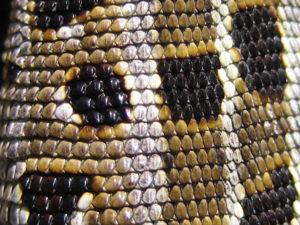Difference between revisions of "Lizard Integument"
| (22 intermediate revisions by 2 users not shown) | |||
| Line 1: | Line 1: | ||
| − | {{ | + | {{unfinished}} |
| − | [[Image: | + | [[Image:The_skin_of_a_lizard.jpg|300px|thumb|right|'''The scaly appearance of the skin of the lizard''' (''Lacerta agilis'') (© RVC and its licensors. All rights reserved)]] |
| − | Lizards have relatively thick skin with ectodermal scales formed by folding of the epidermis and outer dermal layers. Lizards undergo | + | Lizards have relatively thick skin with ectodermal scales formed by folding of the epidermis and outer dermal layers. Lizards undergo reguler periods of shedding (ecdysis) during which the skin comes off in large patches. Frequency depends on the species, temperature, humidity, state of nutrition, and rate of growth. Presence of wounds or skin infections maybe increase the frequency of shed cycles. |
| − | + | Lizards such as geckos have soft, vulnerable skin. | |
| − | |||
| − | |||
| − | |||
| − | |||
| − | + | In species that have rapid colour changes (''Chamaeleo'' spp. and ''Anolis'' spp.) chromatophores are abundant and under hormonal or neurologic control (or sometimes both). Chromatophores are pigmented cells, located just beneath the basal lamina, that may react to stimulation form light or changes in temperature. | |
| − | + | Dewlaps, spines, crests and horns are generally more developed in male lizards. | |
| − | + | Chromatophores are responsible for the change of skin colour in species capable of it. | |
| − | + | A lateral skin fold between the fore and hind limbs provides a convenient site for the subcutaneous injection of fluid. | |
| − | |||
| − | |||
| − | |||
| − | |||
| − | |||
| − | |||
| − | |||
| − | |||
| − | |||
| − | |||
| − | |||
| − | |||
| − | |||
Revision as of 22:18, 25 February 2010
| This article is still under construction. |
Lizards have relatively thick skin with ectodermal scales formed by folding of the epidermis and outer dermal layers. Lizards undergo reguler periods of shedding (ecdysis) during which the skin comes off in large patches. Frequency depends on the species, temperature, humidity, state of nutrition, and rate of growth. Presence of wounds or skin infections maybe increase the frequency of shed cycles.
Lizards such as geckos have soft, vulnerable skin.
In species that have rapid colour changes (Chamaeleo spp. and Anolis spp.) chromatophores are abundant and under hormonal or neurologic control (or sometimes both). Chromatophores are pigmented cells, located just beneath the basal lamina, that may react to stimulation form light or changes in temperature.
Dewlaps, spines, crests and horns are generally more developed in male lizards.
Chromatophores are responsible for the change of skin colour in species capable of it.
A lateral skin fold between the fore and hind limbs provides a convenient site for the subcutaneous injection of fluid.
